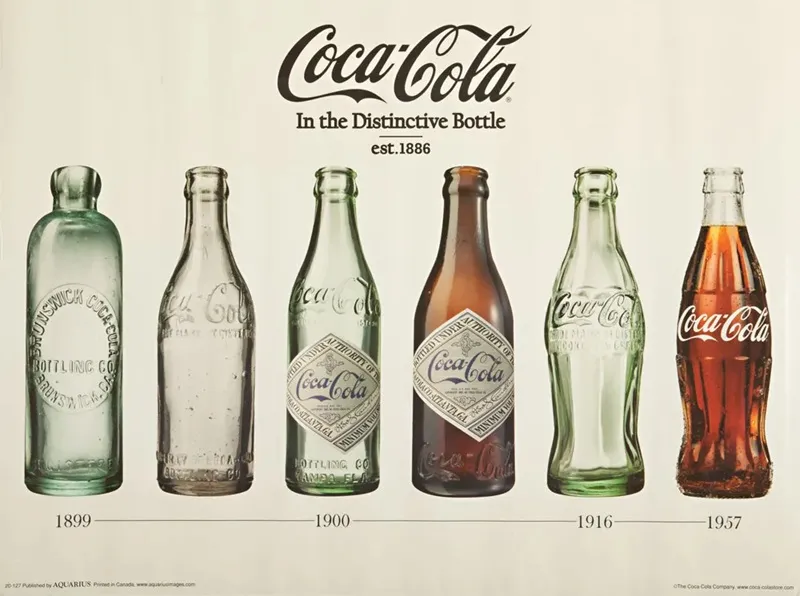


WHY YOUR BRAND CUSTOMERS MUST NEVER GROW OLD
Consumers grow old and die. Your brand must live forever

Much has been written about how to market to elders. Why this market is valuable, why advertising should be age-inclusive etc. All good. But what I want to address in this article is the aging brand user. I’ve often argued that brands need to be progressed. They need to be relevant and salient to your target audience. To make them so, you need to manage your brand and its audience accordingly.
As I covered in my article on How to do consumer research on a shoestring, a good proportion of the client research the Pull agency does is the first formal research the client has ever done for their brand, even though some of these brands have been £100m+ revenue. One of the consequences that now seems quite predictable, is that we learn that the brand’s users are older than the client expects. Typically a whole generation. When this comes as a shock it shouldn’t really.
So do you know the age breakdown of you brand’s customers? Does it matter? What should you do about what you find? When should you be worried?
Hold tight and we’ll give you some answers to all of these questions.
By way of illustration. This was the age cohort breakdown of a large skincare brand that we completed consumer research for.
 I would describe the brand’s appearance as youthful (and I’m not saying that of itself is wrong). Models used are visibly Gen Z/young millennial, and the brand is big on TikTok. However, the generation that seems to be almost defined by TikTok is 2% of the brand’s users. 82% of the brand’s users are over the age of 44, and nearly 40% are over 60. All of this is not in itself a problem. As we have pointed out – if you understand their motivations – Gen X in particular is a great target. But it is a situation worth monitoring.
I would describe the brand’s appearance as youthful (and I’m not saying that of itself is wrong). Models used are visibly Gen Z/young millennial, and the brand is big on TikTok. However, the generation that seems to be almost defined by TikTok is 2% of the brand’s users. 82% of the brand’s users are over the age of 44, and nearly 40% are over 60. All of this is not in itself a problem. As we have pointed out – if you understand their motivations – Gen X in particular is a great target. But it is a situation worth monitoring.
So I think there are five pitfalls marketers have to watch out for when it comes to age of your customers.
1. Don’t get seduced by the ‘lure’ of Gen Z
2. Know the age breakdown of your customers
3. Market to them accordingly
4. Monitor the median age of your customers
5. Act to ensure that median age doesn’t go up
1. Don’t get seduced by the lure of Gen Z
Marketers love Gen Z. There are a few reasons for this – none of them really good. Firstly, there is a perception in marketing circles that Gen X are different to all other generations. And marketers love shiny new things. And marketing writers love writing about shiny new things and how they ‘change everything’. However, research shows that when it comes to things that really matter, there is more that unites the generations than divides them. Human values do not change with each new generation. Some hold throughout age, and even where they change – Boomers were young once too. They were born on the same planet believe it or not.
Secondly, marketing is just about the most youthful industry there is. Dominated by Gen Z and young Millennials 47% of the UK marketing workforce is aged 26-35. By and large people prefer talking to their own age cohort. But if that age group is only 10% of your brand buyers – bear it in mind.
Thirdly – and in health and beauty in particular, Gen Z score highly in making claims about their thirst for sustainable and ‘purpose-driven’ brands. This makes them especially appealing to young marketers who have been mislead by ‘brand purpose’ into thinking that all their brand buyers are really interested in is supporting the same right-on causes that are dear to their own hearts. They should be. When it come to shopping choices and behaviour, Gen Z have the lowest disposable income, and this compromises their stated principles. Their actual shopping and sustainability-related behaviour is very similar to all other generations. For all generations – in health and beauty, sustainability factors come after proven results, affordability and quality ingredients.

1. Know the age breakdown of your customers
This shouldn’t be difficult. Ideally you will have the breakdown for your category overall too, but that might involve quite a large Quant survey if you haven’t already got it from somewhere else. But almost every brand has some customers they can reach and survey. Find at least a few hundred customers (ideally more) email addresses and use SurveyMonkey to quiz them.
2. Market to them accordingly
e-bike Gocycle had been trading for more than a decade before meeting the Pull agency and working with us to define their customer targets. They knew their bike was being bought by for instance - boat owners, but the brand’s vision and mission was of moving commuters out of their cars onto Gocycles. From the customer survey we discovered that the largest customer segment (it’s changed) was what we came to call: “Wealthy gadget-lovers”. They were over sixty, owned at least 2 cars, 8% owned a boat, and a rather amazing 2% owned an aircraft. We helped Gocycle reposition the brand accordingly. This didn’t mean avoiding the environmentally-driven aspect, but Gocycle is a premium product at that time appealing most to the relatively affluent and needed to be positioned as such.
3. Know the age breakdown of your customers
This shouldn’t be difficult. Ideally you will have the breakdown for your category overall too, but that might involve quite a large Quant survey if you haven’t already got it from somewhere else. But almost every brand has some customers they can reach and survey. Find at least a few hundred customers (ideally more) email addresses and use SurveyMonkey to quiz them.
4. Monitor the median age of your customers
At Pull we regularly refer to the ‘Harley Davidson effect’. Harley have at times held up to a 50% share of the US motorcycle market and sold well overseas. They revelled in a hardcore image of their somewhat clannish customers. However, the tail had largely been wagging the dog. They are now a copybook example of a brand that has not progressed. All brands exist really only in the minds of those who know them, and are not able to define their adherents at will. However, brand do have some levers. The first ‘P’ of Product being perhaps the most notable. Younger petrolheads have a different idea of what makes a cool motorcycle than Boomers do. Triumph motorcycles have been notable in progressing their brand over the years to the point that they lowered the average age of a brand owner.
5. Make sure that median age doesn’t go up
Harley on the other hand has achieved the opposite feat. Over the last 30 years or so we estimate that the average age of a brand user has gone up at an average of 1 year per year. You don’t have to be a genius to know where that will end up.

This effect at Harley is difficult to verify to be fair. Up until about 2006 Harley published the average age of buyers in their financial reports. Over the previous 10 years the average age had risen by more than 10 years. Fairly recently they claimed the average age of a buyer was 49. However, they conceded that was based on data from their financial services partner, and on new buyers using credit. Industry insiders think it unlikely that the average age of owners has only increased by 1 year in the last twenty or so, and consider that the average owner is now in their sixties. Will Harley manage to do what Triumph did and reduce the average age of their owners? Most industry insiders think it’s too late. Harley almost seem to have reconciled themselves to having to re-invent the brand as an EV motorcycle targeted at Millennials . Given the brand’s heritage. Image and current user cohort – good luck with that.
Pull worked with a client who has had a similar dilemma with an aging buyer hurtling into their sixties. I won’t name them, but we tried to politely point this out for a number of years. Eventually we had a call: “We think we have a demographic time-bomb”. Don’t let this be you. It doesn’t have to be.
Posted 19 December 2024 by Chris Bullick